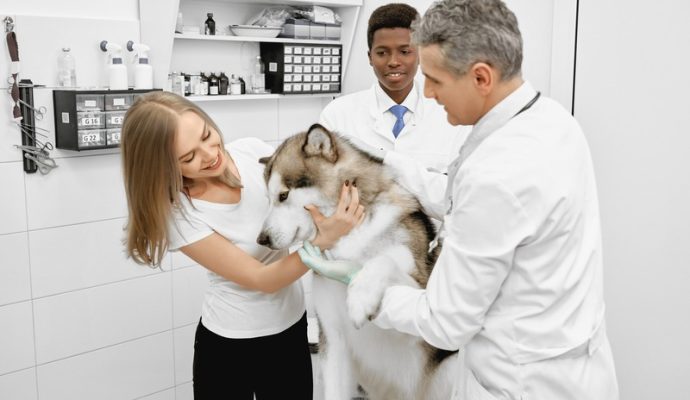Dogs are not typically at the top of our minds when we become aware of diabetes. Canines are susceptible to having diabetes, just like people. With excellent care and cure, diabetic canines may have regular lives like human mates. In diabetes mellitus, cells neglect to soak up adequate glucose, which accumulates in the blood. Organs constantly exposed to sugary blood die as a consequence of cellular starvation. Learn more about the indicators of canine diabetes below.
Symptoms of Diabetes in Dogs
Odd dog habits could make you stress that your animal has diabetes. Understanding the signs of diabetes in canines will assist you in watching out for the problem, which is more typical in canines of all breeds and can have significant consequences if left unattended. If diabetes is not managed, your canine is at a higher risk for obtaining other harmful problems. For that reason, you may check out this list if you think your canine has diabetes.
Urinates More Often
Polyuria, or too much peeing, is a typical symptom of diabetes in canines and a common reason their owners take their animals in for screening. When your canine has diabetes, its kidneys need to work harder than typical to remove the additional glucose in his blood and urine when his blood sugar levels are too high. You need to anticipate increased urination and drinking practices from your dog.
Throwing Up Without Apparent Reason
Throwing up might indicate advanced diabetes when other body organs begin to respond to blood sugars that have been elevated for an extended time. Any animal that is excessively vomiting may have a clinical crisis that necessitates a vet’s care. Dogs might throw up for a number of reasons, including pancreatitis and high blood sugar. You can find many emergency clinics that can help you with your pet’s condition. This emergency clinic will ease your pet’s vomiting problem while examining your pet’s real condition.
Vision Is Worsening
Diabetes is manageable in canines. Unluckily, cataracts are a frequent effect of diabetes in canines. Certainly, after nine months of being diagnosed with diabetes, many dogs acquire cataracts and go blind in both eyes. Advanced cataract growth is a common sign. Lens-induced uveitis (LIU) is an intraocular swelling triggered by cataracts that may lead to glaucoma if not addressed. Cataract surgical treatment may be an alternative if the LIU is not handled and glaucoma starts. If you choose to have your pet cataract surgery, find a veterinary ophthalmologist that can help you.
Uncontrollable Appetite
Given that insulin is a hormone produced by the pancreas to manage blood glucose, a vet would often attribute a diabetic dog’s pressing appetite to the problem. Diabetes may be the cause if your dog never stops consuming yet continues to experience weight reduction. In the absence of sugar, your canine’s body will enter a state referred to as “starvation mode,” causing it to enhance its food intake.
Skin Seem to Be in Poor Condition
Poor hair and skin quality prevail in untreated diabetic canines. A hair coat without gloss and thins down, dandruff, and dry, flaky skin are all indicators that a canine is persistently dried due to too much water loss in the urine and inadequate nutrients intake as a result of insulin resistance. Insulin therapy efficiently handles these conditions since it allows the body to divert sources formerly used to preserve essential organ features into increasing and maintaining healthy hair. A pet dermatologist can help you with your pet’s skin condition.




